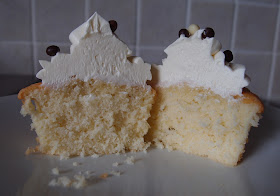This cake is so almondy and flavoursome it’s a
nut-lover’s dream. The almond in the
cake comes predominantly from the marzipan layer baked into the batter. I made the cake square and, whether pastry or
marzipan, I am totally unable to roll
things out into anything but circles.
Don’t panic if you’re the same – simply cut the curvy edges off and use
for patching!
The fudgy glaze sets to a crisp shell and adds
lovely texture and flavour. It was
hugely popular with my eatership and I will definitely use it again on future
cakes.
If you’re not mad on cinnamon, use another
spice of your choice – nutmeg or even ginger would work well; as would simply
increasing the mixed spice.
I had a couple of slices of the cake left over
(this should indicate that it’s a BIG cake!) so, on a subsequent evening,
gently warmed them in the oven and served with custard for dessert. Hardly a shocking newsflash but, guess what,
it really worked!
Ingredients
For the marzipan:
115g ground almonds
55g icing sugar
55g caster sugar
1 teaspoons almond extract
1 egg, separated
55g icing sugar
55g caster sugar
1 teaspoons almond extract
1 egg, separated
For the
cake:
260g unsalted butter, at room temperature
260g caster sugar
5 eggs
340g self raising flour
3 teaspoons baking powder
1 teaspoon ground cinnamon
½ teaspoon mixed spice
115g flaked almond
260g caster sugar
5 eggs
340g self raising flour
3 teaspoons baking powder
1 teaspoon ground cinnamon
½ teaspoon mixed spice
115g flaked almond
For the
topping:
75g unsalted butter
150g light brown sugar
3 tablespoons double cream
50g flaked almonds
150g light brown sugar
3 tablespoons double cream
50g flaked almonds
To serve: thick cream
Method
Start by making the marzipan: Place the almonds and both sugars into a
bowl and stir until combined. I did this in my Kitchenaid mixer.
Add the egg yolks and almond extract and mix until well combined.
Add a spoonful of the egg white and beat, continue to add tablespoonfuls
of egg white until the marzipan forms into a firm ball.
Roll the marzipan out to a 20cm square between two sheets of
clingfilm – this means you don’t have to
add any more icing sugar to it, plus peel off only one sheet of clingfilm when
you wish to position on the cake – you have far more control over it while the
clingfilm supports it (obviously put it face down on the cake i.e. so the
clingfilm is on top!)
Peel off the clingfilm.
Trim the marzipan to size then put to one side.
Preheat the oven to 180°C/fan oven 160°C/350°F/gas mark 4.
Line a 20cm square tin with baking paper.
Place all the cake ingredients, except for the almonds, into
a large mixing bowl and beat together until smooth and well combined.
Fold in the almonds.
Spoon just over half the batter into the prepared tin and
level the surface.
Gently place the rolled marzipan onto the batter and smooth
it down if it’s crinkled or curled up anywhere.
Place the remaining batter on top of the marzipan and level
the surface.
Bake for approximately 1 hour and 15 minutes, or until a
skewer inserted into the cake comes out clean.
Leave to cool, in the tin, for 20-30 minutes before removing
the tin and leaving the cake to cool completely on a wire rack.
Now make the topping: heat the butter, sugar and cream in a
saucepan over a medium heat until they are blended – stir regularly.
Bring the mix to the boil then remove from the heat.
Place a sheet of foil or kitchen paper on your work top,
then stand the cake on a wire rack directly above the paper (to catch any
drips).
Drizzle the topping over the cake then sprinkle the almonds
on top.
Leave to set for approximately 20 minutes.
Bask in the glory of the wonderful thing you have created.
Eat.





























